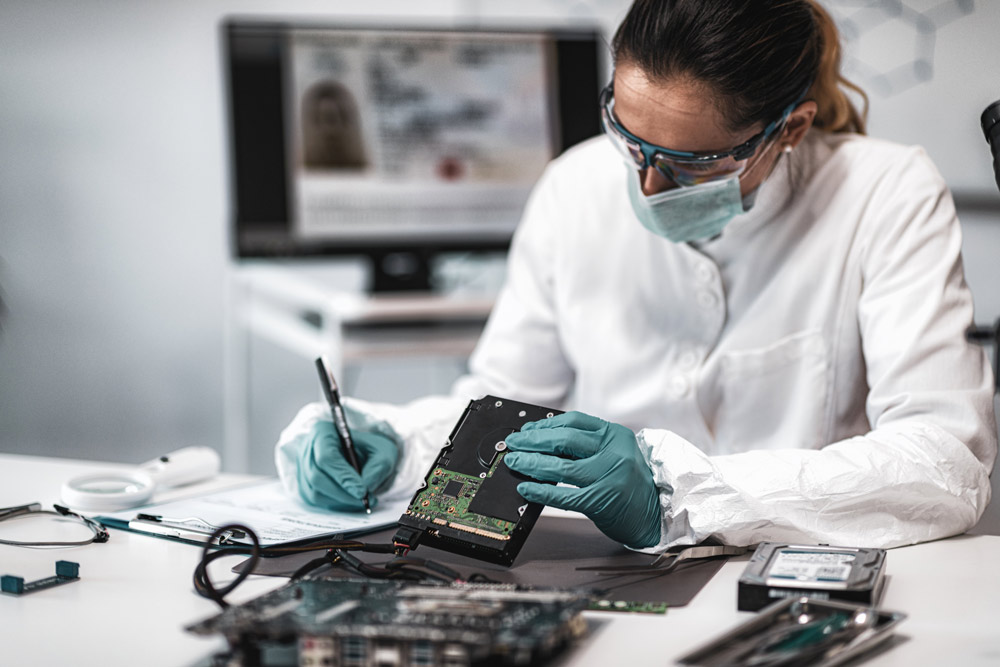
If you're fascinated by how technology and investigation work together to solve digital mysteries, digital forensics might be an exciting field to dive into. Whether you're eager to protect data, help with legal cases, or explore how information flows through systems, digital forensics offers a focused way to uncover and understand electronic evidence. So, what is digital forensics, how does it work, and why is it so important?
Digital forensics is a fast-evolving field that combines tech skills with investigative thinking to reveal the stories behind data. It plays a vital role in both legal and internal reviews, making it valuable in law, business, and cybersecurity. As technology has become part of daily routines, this science keeps growing, using new tools to work with digital information.
Digital evidence can come from computers, phones, networks, or smart devices. The goal is to pull meaningful information that explains user activity or system behavior. This calls for strong technical know-how and careful methods to ensure that the data remains trustworthy and intact.
Why is Digital Forensics important?
Digital forensics makes a big impact across many fields. It's used to support police work, court cases, corporate checks, and cyber protection. With so much happening online—emails, messages, shared files, the ability to read digital records is more important than ever.
Common use cases include:
What makes digital forensics so valuable is how it brings clarity. By tracing logs, time stamps, and patterns, it helps teams figure out what happened and when.
Digital forensics helps build a clear picture of digital events, which can support informed decisions across a variety of settings.
It also prevents future issues. When teams understand how an incident occurred, they can fix weak spots and boost security. In fields with strict rules, digital forensics can also prove that systems were used the right way, showing activity clearly and accurately.
What do Digital Forensics investigators do?
Digital forensics investigators focus on retrieving, analyzing, and interpreting data from a wide array of electronic sources. The goal is to support investigations or clarify digital behavior, all while preserving the integrity of the information.
Responsibilities typically include:
- Creating forensic copies (bit-for-bit images) of hard drives or other storage devices
- Examining metadata and file histories to understand usage
- Using forensic tools to extract and interpret data from computers, phones, or cloud platforms
- Logging procedures and findings with clear, detailed documentation
- Ensuring all evidence is handled in accordance with legal and organizational standards
In many situations, investigators work closely with legal teams, IT security staff, or compliance departments to ensure that digital evidence is collected, preserved, and analyzed in a way that meets regulatory and procedural standards. Their collaboration helps align findings with legal frameworks, supports internal investigations, and strengthens organizational response to incidents. Because the data involved can be sensitive or encrypted—ranging from personal identifiers to confidential business records—technical skills, ethical awareness, and careful handling are essential at every stage of the forensic process.
They also need to be aware of how data moves across digital environments. A user’s activity on one device may leave traces in multiple places—on a hard drive, in cloud storage, or in log files maintained by a server. Effective digital forensics professionals understand how to track these patterns and interpret the information they uncover.
Professionals in this field must keep up with emerging tools and threats. As technology continues to evolve—especially with cloud computing, mobile apps, and remote systems, so do the methods used to collect and examine digital evidence.
Individuals interested in digital forensics often come from backgrounds in computer science, information technology, or cybersecurity. Some pursue academic programs focused specifically on digital forensics, which introduce core concepts such as data recovery, evidence handling, legal protocols, and analysis techniques.
These programs may include:
- Training in forensic imaging and examination software
- Simulations of real-world investigations
- Lessons on digital law and ethics
- Hands-on labs to develop technical skills
When did Digital Forensics start?
The origins of digital forensics go back to the 1980s, when personal computers became more common in homes and workplaces. As technology spread, investigators began to encounter digital information during traditional investigations. At that time, however, there were few if any formal protocols for handling this kind of data.
Initially, digital evidence was often treated like any other physical item — without specialized handling, documentation, or tools. But as the use of digital devices expanded, so did the need for consistent, accurate, and secure ways to examine them.
By the 1990s, digital forensics began to emerge as a distinct discipline. Law enforcement agencies formed dedicated cybercrime units, and developers began creating software to help recover and analyze data. Standards and certifications also began to take shape, helping to ensure that evidence was collected and processed in reliable ways.
Digital forensics has grown from basic data recovery to a multi-faceted field involving mobile devices, networks, and cloud systems. Today, it covers a wide range of technologies and platforms, including smartphones, tablets, IoT (Internet of Things) devices, and cloud services. Investigators must navigate increasingly complex environments, requiring ongoing learning and adaptability.
Digital forensics is a critical part of how organizations and agencies understand digital behavior. Whether it’s used to clarify timelines, retrieve lost information, or examine how a system was accessed, the work of digital forensics professionals plays an important role in today’s data-driven world.
As the digital landscape continues to expand, so does the need for individuals who understand how to manage and interpret digital evidence responsibly. Academic programs in digital forensics provide opportunities to study investigative techniques, forensic tools, and relevant protocols for evidence handling.
To explore an academic option in this area, you could visit ECPI University’s Bachelor of Science in Digital Forensics for more details about the program’s structure and areas of focus.

